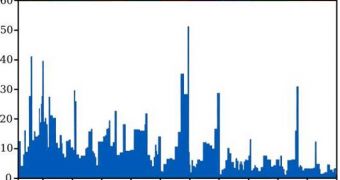The events that unfolded about 250 million years ago, at the Permian-Triassic boundary, are some of the most mysterious in history. At that moment, over a short period of time, more than 90 percent of all animals and plants on the surface of the planet died off, in a massive extinction event, for which satisfactory explanations are yet to be found. Previous theories held that an asteroid impact triggered the extinction, but studies have since proven that to be impossible. Now, a new research brings a totally different perspective on what happened during Earth's most devastating period.
The new report, published in the scientific journal Proceedings of the Russian Academy of Sciences, holds that responsible for the disaster were giant salt lakes that covered significant stretches of land at the time. They supposedly emitted enormous amounts of halogenated gases, which irretrievably affected vegetation and prevented it from recovering. Left without their main source of food, herbivore animals perished, taking down the entire food chain with them.
“Our calculations show that airborne pollutants from giant salt lakes like the Zechstein Sea must have had catastrophic effects at that time,” Helmholtz-Center for Environmental Research (UFZ) researcher Dr. Ludwig Weissflog, one of the co-authors of the new study, explains.
What's concerning is the fact that this theory is actually based on modern-day processes recorded around the world. With climate change and increasing temperatures, more and more freshwater lakes dry up or are replaced by saltwater ones and deserts.
There is a real threat that these stretches of water will begin to emit increasing amounts of halogenated gases, which will affect the planet in very much the same way they did more than 250 million years ago. “Consequently, we assume that the climatic, geo-chemical and microbial conditions in the area of the Zechstein Sea were comparable with those of the present day salt seas that we investigated,” the expert adds. The Zechstein Sea, long since gone, occupied much of Northern Europe and comprised the North Sea, as well as areas now in Britain, Germany and Poland.
“Using steppe plant species, we were able to prove that halogenated gases contribute to speeding up desertification: The combination of stress induced by dryness and the simultaneous chemical stressor 'halogenated hydrocarbons' disproportionately damages and destabilize the plants and speeds up the process of erosion,” University of Heidleberg expert Dr. Karsten Kotte explains.
“The question as to whether the halogenated gases from the giant salt lakes alone were responsible for it or whether it was a combination of various factors with volcanic eruptions, the impact of asteroids, or methane hydrate equally playing their role still remains unanswered,” Weissflog concludes.

 14 DAY TRIAL //
14 DAY TRIAL //